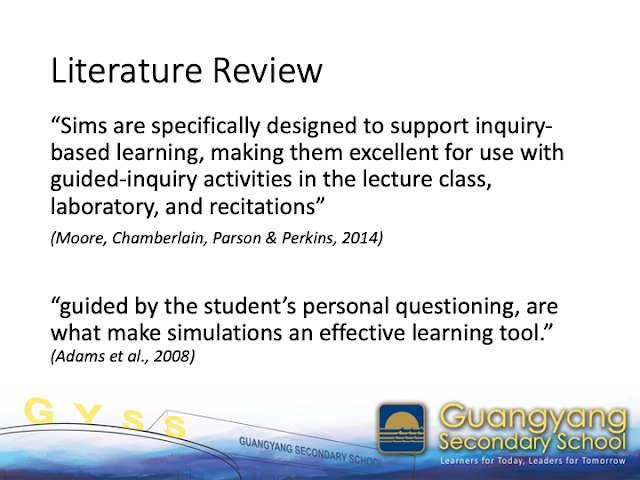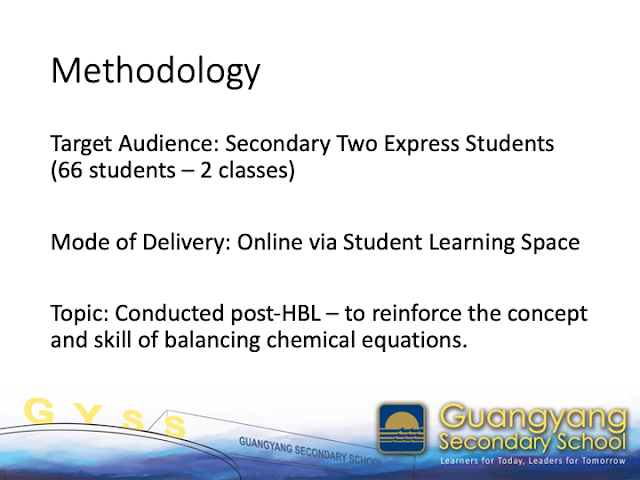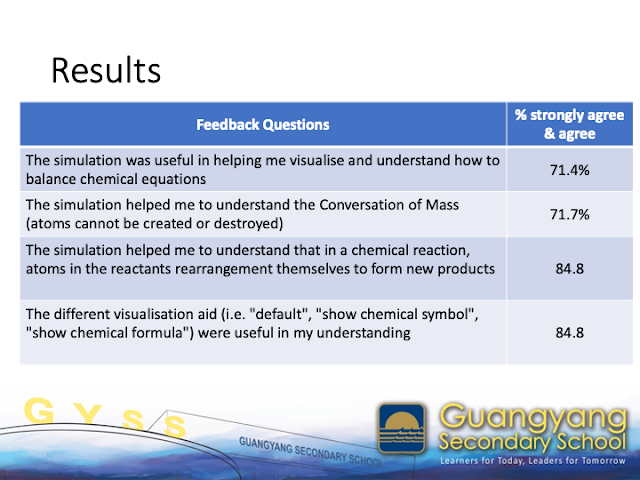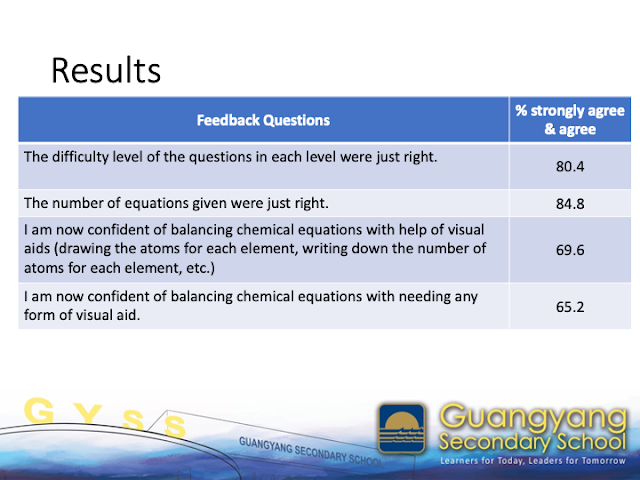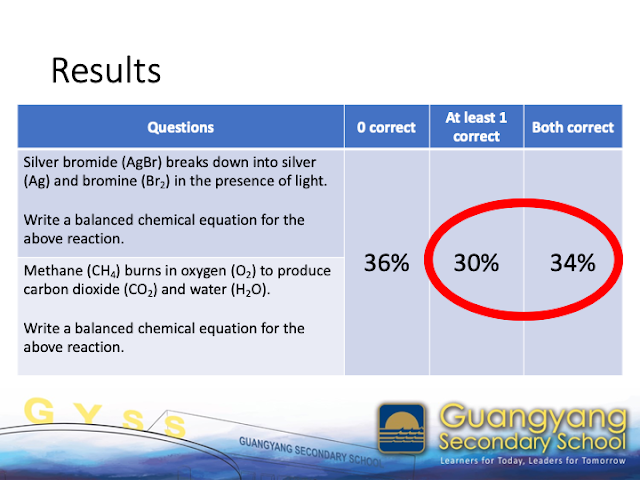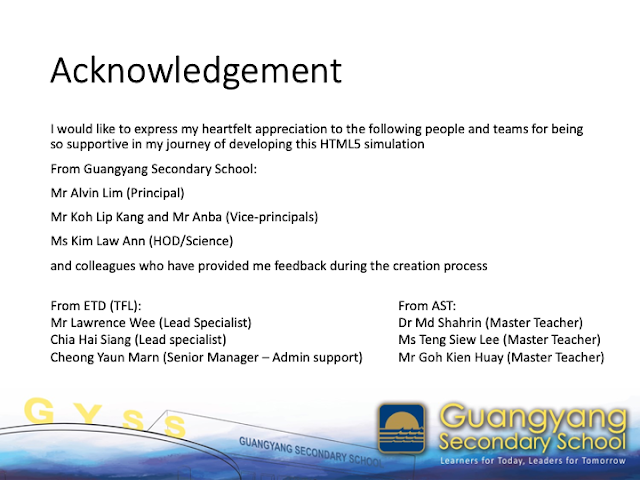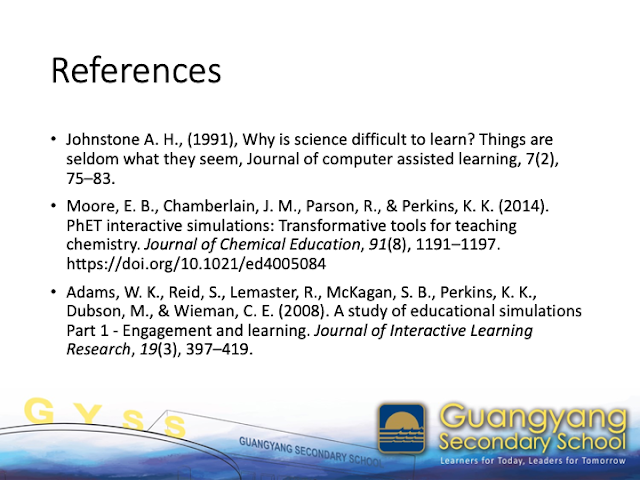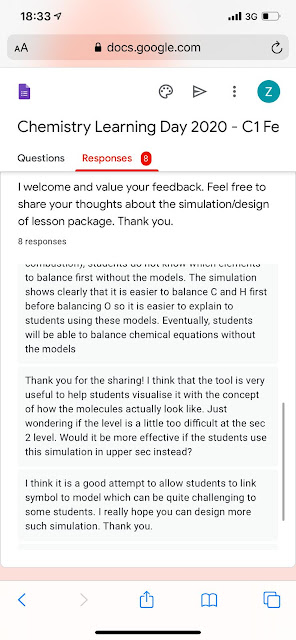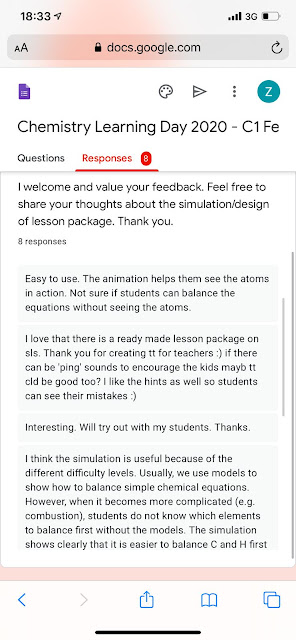Overview:
This document summarizes the key information and themes evident in the provided excerpt from the Open Educational Resources / Open Source Physics @ Singapore website. The excerpt announces and links to a sharing session on a Chemistry Learning Day, specifically focusing on Chemistry for Secondary levels, covering topics like Chemical Reactions, Acids, Bases and Salts, and importantly, provides direct links to interactive resources for balancing chemical equations, particularly ionic equations. The context highlights the use of open educational resources and interactive simulations for chemistry education in Singapore.
Main Themes and Important Ideas:
- Chemistry Education Focus: The primary theme is the sharing of resources and potentially pedagogical approaches for teaching chemistry at the secondary level. The specific mention of "AST Chemistry Chapter Chemistry Learning Day C1 sharing by Zenia" suggests a targeted event for chemistry educators or learners interested in these topics.
- Specific Chemistry Topics: The sharing explicitly covers "Chemical Reactions" and "Acids, Bases and Salts," which are fundamental topics in secondary school chemistry. The inclusion of links related to "BalancingChemEqns21_ionic" indicates a specific focus on the skill of balancing chemical equations, with an emphasis on ionic equations.
- Emphasis on Interactive Learning Resources: The excerpt is housed within the "Open Educational Resources / Open Source Physics @ Singapore" platform, which is known for providing interactive simulations and applets for learning science and mathematics. The direct inclusion of multiple links to interactive simulations for balancing chemical equations underscores the importance of this pedagogical approach. These links point to resources hosted on iwant2study.org which utilizes the Easy Java/JavaScript Simulations (EjsS) toolkit.
- The repetition of the balancing chemical equations link (https://go.gov.sg/balancinghttps://iwant2study.org/lookangejss/00workshop/2019twa/ejss_model_BalancingChemEqns21_ionic/BalancingChemEqns21_ionic_Simulation.xhtml and https://iwant2study.org/lookangejss/00workshop/2019twa/ejss_model_BalancingChemEqns21_ionic/BalancingChemEqns21_ionic_Simulation.xhtml and https://sg.iwant2study.org/ospsg/index.php/interactive-resources/chemistry/03-chemistry-of-reactions/915-balancingchemeqns21-ionic) emphasizes the availability and likely the focus on this specific interactive tool during Zenia's sharing.
- Open Educational Resources (OER): The platform itself is dedicated to OER, indicating a commitment to freely accessible and reusable educational materials. Zenia's sharing likely highlighted how these open resources can be effectively integrated into chemistry teaching and learning.
- Community Sharing and Collaboration: The event being a "sharing by Zenia" suggests a collaborative environment where educators share their knowledge and resources. This is further supported by the platform being a repository of materials contributed by various individuals and projects.
- Integration with National Platforms: The inclusion of a link to an "SLS lesson" (https://vle.learning.moe.edu.sg/community-gallery/lesson/view/c2cd909f-5ed7-49f3-9959-3ac4bcf6a71f) indicates a connection between the open resources and Singapore's national Student Learning Space (SLS), suggesting a potential integration of these interactive tools within the national curriculum or learning management system.
Quotes from Original Sources:
- "awesome sharing by Zenia!" - This informal comment highlights positive reception of Zenia's sharing.
- The breadcrumbs clearly indicate the context: "Home > Interactive Resources > Physics > 06 Modern Physics > PICUP Relativistic Dynamics in 1D with a constant force JavaScript Simulation Applet HTML 5" followed by the actual page context "Home > Interactive Resources > Physics > 06 Modern Physics > PICUP Relativistic Dynamics in 1D with a constant force JavaScript Simulation Applet HTML 5 #### 20200819 AST Chemistry Chapter Chemistry Learning Day C1 sharing by Zenia * Secondary * Chemistry * Chemical Reactions * Acids, Bases and Salts". This juxtaposition, while seemingly out of order, confirms the topic and level of the sharing.
- The repeated inclusion of links like https://iwant2study.org/lookangejss/00workshop/2019twa/ejss_model_BalancingChemEqns21_ionic/BalancingChemEqns21_ionic_Simulation.xhtml directly points to the specific interactive resource being shared for balancing ionic chemical equations.
Further Considerations:
- The extensive list of other interactive resources available on the platform, ranging from physics and mathematics to games and tools for language learning, showcases the breadth of OER available through this initiative.
- The mentions of various "SLS Hackathons" suggest a focus on developing interactive educational content within the Singaporean educational context.
- The inclusion of awards and recognition received by the Open Source Physics team highlights the value and impact of their work.
Conclusion:
The excerpt provides a glimpse into a Chemistry Learning Day session focused on secondary level topics, particularly Chemical Reactions and Acids, Bases and Salts, with a strong emphasis on utilizing interactive simulations for teaching and learning, specifically for balancing ionic chemical equations. The context within the Open Educational Resources / Open Source Physics @ Singapore platform underscores the commitment to freely accessible and engaging educational materials and community sharing among educators. Zenia's sharing likely provided valuable insights into incorporating these interactive tools into chemistry lessons, potentially even within the framework of Singapore's Student Learning Space.
Chemistry Learning Day C1 Review
Overview: This study guide is designed to help you review the content referenced in the "20200819 AST Chemistry Chapter Chemistry Learning Day C1 sharing by Zenia" resource. The primary focus appears to be on resources related to chemistry, particularly chemical reactions and acids, bases, and salts, as well as interactive simulations for learning these concepts.
Quiz: Short Answer Questions
- Based on the page title, what was the main topic of Zenia's sharing on August 19, 2020?
- The "Breadcrumbs" section indicates that the shared content falls under which broader chemistry topic?
- List two specific subtopics within chemistry that are mentioned in the "Breadcrumbs."
- The resource provides links to external websites. Name one topic of a simulation found through these links.
- Besides balancing chemical equations, what other chemistry concept is explicitly mentioned in the context of interactive simulations?
- What type of files are many of the interactive resources on this page built with?
- The page mentions a "SLS lesson." What might SLS stand for in this context, considering the other listed resources?
- The resource includes links related to both physics and chemistry. Provide an example of a physics-related simulation listed.
- What does the presence of links to "balancing" simulations suggest about a potential learning objective of the shared material?
- The "Popular Tags" section includes "Formulae, Stoichiometry and the Mole Concept." How might this topic relate to the other chemistry areas mentioned on the page?
Quiz Answer Key
- The main topic of Zenia's sharing on August 19, 2020, was related to a Chemistry Chapter Learning Day C1.
- The broader chemistry topic under which the shared content falls is "Chemical Reactions."
- Two specific subtopics within chemistry mentioned in the "Breadcrumbs" are "Acids, Bases and Salts."
- One topic of a simulation found through the links is "Balancing ChemEqns21_ionic" (Balancing Ionic Chemical Equations).
- Besides balancing chemical equations, "ionic bonding" is another chemistry concept mentioned in the context of interactive simulations.
- Many of the interactive resources on this page are built with HTML5 and JavaScript.
- Given the Singapore context and other educational resources listed, SLS likely stands for Student Learning Space.
- An example of a physics-related simulation listed is "PICUP Relativistic Dynamics in 1D with a constant force JavaScript Simulation Applet HTML 5."
- The presence of links to "balancing" simulations suggests that a potential learning objective of the shared material is to understand and master the process of balancing chemical equations.
- Formulae, Stoichiometry, and the Mole Concept are foundational to understanding chemical reactions and the quantitative relationships between reactants and products, which is essential for balancing equations and studying acids, bases, and salts.
Essay Format Questions
- Discuss the potential benefits of using interactive simulations, like those linked in the resource, for learning chemistry concepts such as balancing equations and understanding acids, bases, and salts.
- Based on the structure and content of the webpage, what can you infer about the pedagogical approach or teaching philosophy behind sharing these resources?
- Analyze the variety of resources linked on the page, considering the subject matter (chemistry vs. physics, primary vs. secondary levels) and the types of interactives provided. What does this suggest about the broader goals of the "Open Educational Resources / Open Source Physics @ Singapore" initiative?
- Consider the listed topics within chemistry (chemical reactions, acids, bases, salts) and the mention of "Formulae, Stoichiometry and the Mole Concept." Explain how these areas are interconnected and why a foundational understanding of one is important for grasping the others.
- Reflect on the significance of open educational resources (OER) like the ones presented on this page for science education. What advantages and potential challenges might be associated with their use in teaching and learning chemistry?
Glossary of Key Terms
- Open Educational Resources (OER): Teaching, learning, and research materials in any medium, digital or otherwise, that reside in the public domain or have been released under an open license that permits no-cost access, use, adaptation, and redistribution by others with no or limited restrictions.
- Interactive Simulation: A computer-based model that allows users to manipulate variables and observe the resulting changes in a system or process, often used for educational purposes to visualize abstract concepts or conduct virtual experiments.
- HTML5: The latest evolution of the standard Hypertext Markup Language, used for structuring and presenting content on the World Wide Web. It supports multimedia and interactive elements without the need for plugins.
- JavaScript: A high-level, often just-in-time compiled programming language that conforms to the ECMAScript specification. It is commonly used in web development to add interactivity and dynamic effects to websites.
- Chemical Reactions: Processes that involve rearrangement of the molecular or ionic structure of a substance, as opposed to a change in physical form or nuclear reaction.
- Acids: Chemical substances that donate protons or accept electrons. They typically have a sour taste, can corrode metals, and turn blue litmus paper red.
- Bases: Chemical substances that accept protons or donate electrons. They typically have a bitter taste, feel slippery, and turn red litmus paper blue.
- Salts: Chemical compounds formed from the reaction of an acid and a base. They consist of positively charged ions (cations) and negatively charged ions (anions).
- Balancing Chemical Equations: The process of ensuring that the number of atoms of each element is the same on both the reactant and product sides of a chemical equation, reflecting the law of conservation of mass.
- Ionic Bonding: A type of chemical bonding that involves the electrostatic attraction between oppositely charged ions, typically formed between a metal and a nonmetal
awesome sharing by Zenia!
enjoy!
 |
| https://go.gov.sg/balancing https://iwant2study.org/lookangejss/00workshop/2019twa/ejss_model_BalancingChemEqns21_ionic/BalancingChemEqns21_ionic_Simulation.xhtml |
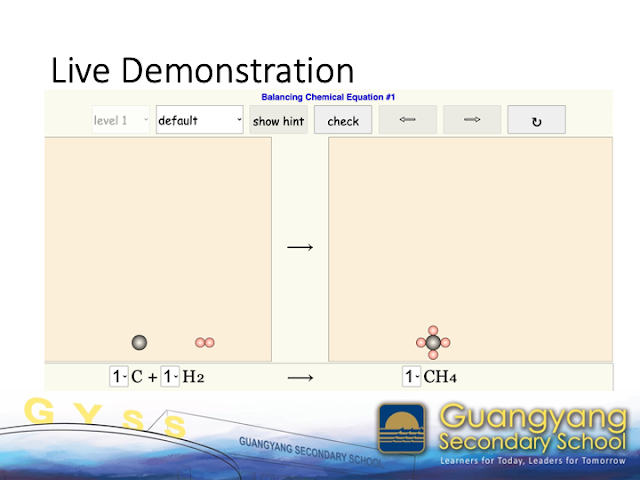 |
| https://iwant2study.org/lookangejss/00workshop/2019twa/ejss_model_BalancingChemEqns21_ionic/BalancingChemEqns21_ionic_Simulation.xhtml |
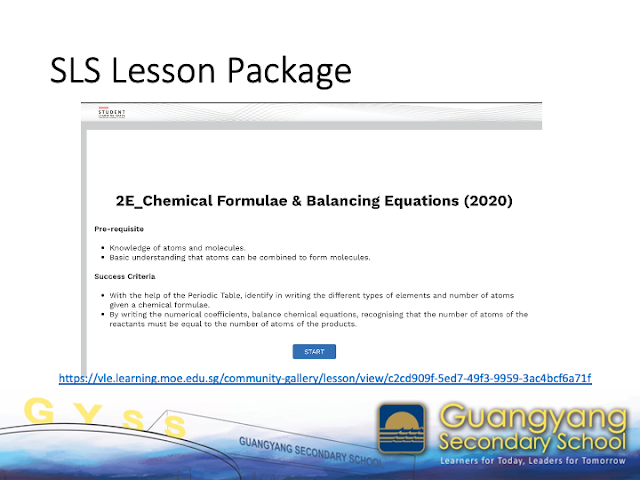 |
| https://vle.learning.moe.edu.sg/community-gallery/lesson/view/c2cd909f-5ed7-49f3-9959-3ac4bcf6a71f SLS lesson |
Frequently Asked Questions about the Open Educational Resources / Open Source Physics @ Singapore Website
1. What is the main focus of the "Open Educational Resources / Open Source Physics @ Singapore" website? The website primarily focuses on providing open educational resources, particularly interactive simulations and applets, for physics and chemistry education, mainly targeting secondary and primary school levels in Singapore. It also includes some resources for mathematics and other subjects.
2. What types of resources can be found on this website? The website hosts a wide variety of interactive simulations and applets created using HTML5 and JavaScript. These resources cover topics in physics (e.g., mechanics, waves, electromagnetism, modern physics), chemistry (e.g., chemical reactions, acids, bases, salts, bonding, organic molecules), and mathematics (e.g., geometry, algebra). There are also some games and interactive tools for other subjects like English and Malay language learning.
3. Who is the primary audience for the materials on this website? The resources are mainly designed for educators and students at the secondary and primary school levels in Singapore. This is evident from the curriculum-related topics covered (e.g., O level and A level chemistry, primary science and math), references to the Singapore Student Learning Space (SLS), and inclusion of some resources in local languages.
4. Are the resources on this website free to use? Yes, the website is titled "Open Educational Resources," and the content is licensed under the Creative Commons Attribution-Share Alike 4.0 Singapore License, indicating that the materials are generally free to use, adapt, and share for non-commercial purposes, as long as attribution is given and any adaptations are shared under a similar license. However, for commercial use of the Easy JavaScript Simulations Library used in some resources, a separate license needs to be obtained from the University of Murcia (um.es).
5. What is the purpose of the interactive simulations and applets? The interactive simulations and applets aim to enhance learning by providing students with engaging and visual ways to explore abstract concepts in physics, chemistry, and mathematics. They allow users to manipulate variables, observe the effects, and gain a deeper understanding through hands-on virtual experimentation.
6. Are the resources on this website static, or is there ongoing development? The website appears to be actively maintained and updated with new resources. The inclusion of dates in some of the links and descriptions (e.g., "20200819 AST Chemistry Chapter Chemistry Learning Day," "SLS Hackathon 2019") suggests ongoing contributions and additions of new interactive tools and materials.
7. What tools and platforms are associated with the creation and use of these resources? The primary tools mentioned are HTML5 and JavaScript for creating the interactive simulations and applets. The website also references the Easy Java/JavaScript Simulations Toolkit (EjsS), indicating its use in developing many of the resources. Furthermore, there are mentions of the Singapore Student Learning Space (SLS) as a platform where some of these resources are integrated.
8. Does the website highlight any specific achievements or recognition? Yes, the website mentions that it was "Recommended in Journal Paper as One of the Top Three Websites for COVID-19 virtual labs education" and that the "Open Source Physics Team" received the "2020 Excellence in Physics Education Award from American Physical Society." These points highlight the quality and impact of the resources provided on the website





